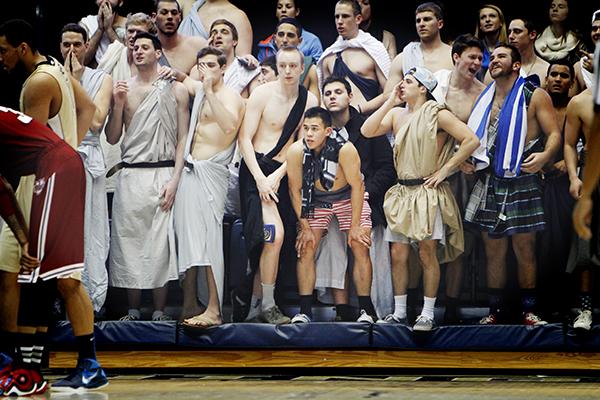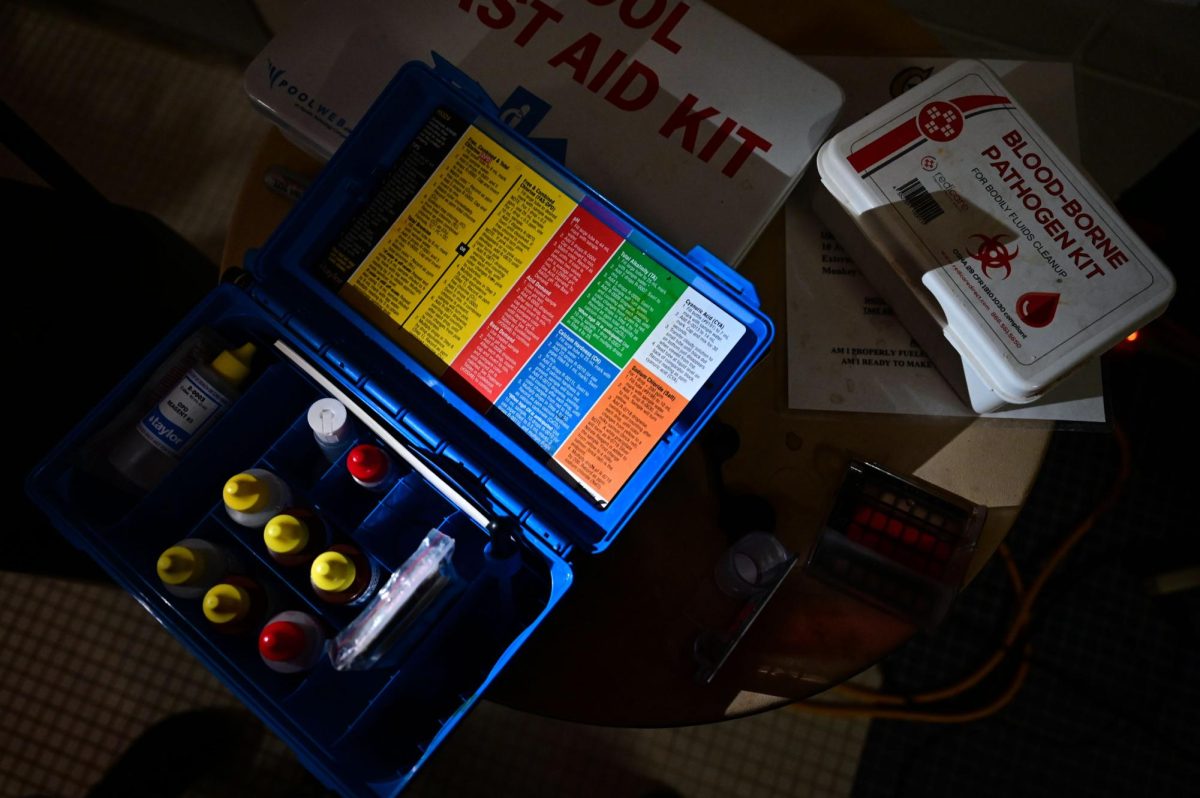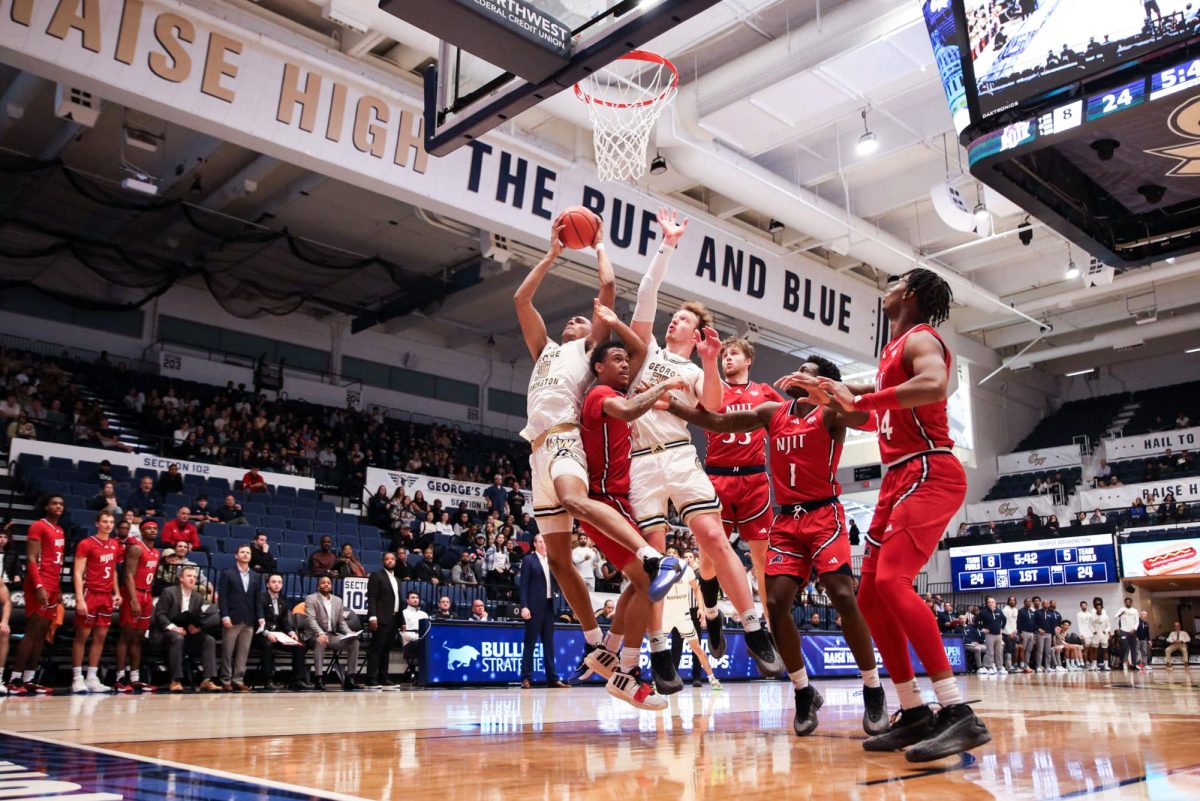
Let’s face it, GW isn’t known for having a rabid basketball fan base. While a small, devoted core of fans, like members of the Colonial Army, are loud inside the Smith Center each game, many students and alumni didn’t pay attention when the Colonials upset No. 20 Creighton. Or when they beat Maryland at the buzzer. Or when they won their first conference tournament game in seven years.
That’s why we’re here. Even if you haven’t been paying attention – or know very little about college basketball – we’ll answer these questions from the bleachers.
Who decided which teams play in the NCAA Tournament? How did they decide?
A 10-person selection committee – made up of both university athletic directors and conference commissioners – met last weekend to decide who was in and who was out.
The 68 teams picked to play in the NCAA Tournament are chosen one of two ways. Thirty-one of the 68 participating teams qualified for the “big dance” by winning their respective conference tournaments.
If teams don’t win their conference tournaments – Saint Joseph’s, not GW, won the Atlantic 10 Tournament, for instance – they can also get into the NCAA Tournament based on several statistics: their ranking in national polls, their conference record, their record against teams played on the road, wins versus ranked opponents, and the team’s overall record at the end of the regular season.
Often, a statistic called rating percentage index, or RPI, is used. That’s a combination of all the aforementioned criteria crunched into a single statistical value that makes it easier to evaluate and compare teams.
GW may not have won its conference, but it had an RPI ranking of 29th in the country, making it a sure bet the Colonials would get into the NCAA Tournament through an at-large bid.
What is a seed? Is a No. 9 seed bad?
Each team in the tournament gets a seed – one through 16 – after it has been sorted into the four regions of the bracket. That seed is the team’s rank within that region. The No. 1 seeds are the best of the best in the whole tournament.
GW is the No. 9 seed in its region – which has positives and negatives. While a No. 9 seed has never won the national title, it sets GW up well to potentially beat its first-round opponent, No. 8 seed Memphis.
In total, ten teams seeded No. 8 or lower have advanced to the Final Four since 1979, when the seeding process began.
The No. 9 and No. 8 pairing is the closest pairing of any seed combination in the tournament, meaning that in theory, GW is about as good a team as Memphis.

If GW wins on Friday, what happens?
The downside of the No. 9 seed is that if the Colonials win Friday, they will likely have to play the No. 1 seed in their region: University of Virginia. While upsets are known to happen in the tournament – referred to as Cinderellas or bracket-busters – playing against Virginia would not be a good matchup for GW.
From there, the tournament field is continuously cut in half each round until there is one victor. If GW does the improbable and beats Virginia, the team would head to the Sweet 16.
If GW loses this weekend, did the team fail?
Definitely not. GW’s odds to win the whole tournament are 250 to 1, and the team is pegged as the underdog in Friday’s matchup against Memphis. If the Colonials lose to the Tigers, it will still be their most successful season in seven years. GW was picked to finish 10th out of 13 teams in the A-10 this season. By the end of the regular season, they had finished third.
Hadn’t GW been bad at basketball for a while before this season?
Pretty much. The team has at least been mediocre, and attendance at games has been poor because GW hasn’t made a trip to the NCAA Tournament since 2007. The Colonials have also had losing records for the past two seasons. In fact, GW won more games than the 2011-12 and 2012-13 seasons combined this season.

Who are the best players on the team? What should I know about them?
Maurice Creek
Creek is the guy on the floor you’re going to see shoot three-pointers and show the most poise. Creek emerged as the star of the Colonial lineup throughout the season after transferring from Indiana for his final year of eligibility. The graduate student leads the team in scoring, averaging 14.3 points per game.
Creek’s biggest moment of the season came against Maryland, where the 6-foot-5 guard hit a jump shot against the Terrapins with 0.6 seconds left to play at the BB&T Classic. Creek was named to the A-10 All-Conference third team at the conclusion of the regular season, which – for the basketball novices reading – means he’s one of the best players in the conference.
Isaiah Armwood
Senior Isaiah Armwood is the biggest presence for the Colonials around the basket, showing off jaw-dropping dunks. Over the course of the season Armwood tallied 10 double-doubles (meaning he scored at least 10 points and got at least 10 rebounds in a game). This season, Armwood averaged 12.3 points and 8.7 rebounds per game, good for second best in the conference. The senior earned Second Team All-A-10 honors, as well as a spot on the all-defensive team.







